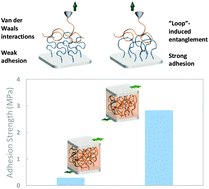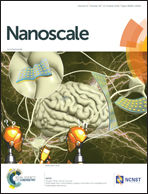Velcro-mimicking surface based on polymer loop brushes†
Abstract
We herein report the fabrication of a Velcro-mimicking surface based on polymer brushes. Using poly(ε-caprolactone) (PCL) as the model polymer, polymer loop brushes (PLBs) and singly tethered polymer brushes (STPBs) with nearly identical tethering point density and brush heights were synthesized using a polymer single crystal (PSC)-assisted grafting-to method. Atomic force microscopy-based single molecular force spectroscopy (AFM-SMFS) and macroscale lap-shear experiments both demonstrated that the PLBs led to strong adhesion that is up to ∼10 times greater than the STPBs, which is attributed to the enriched chain entanglement between the probing polymer and the brushes. We envisage that our results will pave the way towards a new materials design for strong adhesives and nanocomposites.



 Please wait while we load your content...
Please wait while we load your content...
